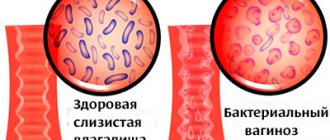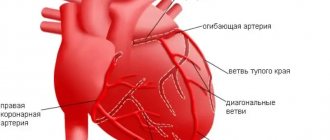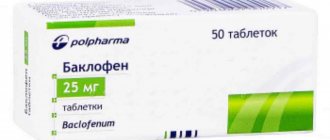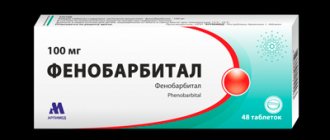A disease caused by exposure to ionizing radiation is called radiation sickness. In both humans and animals, it can affect almost all organs and systems: skin, bone marrow, nervous system, digestive organs, endocrine glands, and so on. Radiation sickness often results in various types of oncology.
People come into contact with powerful sources of ionizing radiation during X-ray examinations or during treatment using radioactive drugs, as well as those who have been in areas of increased radioactivity (emergency nuclear power plants, or areas where atomic weapons were used or tested).
Flows of alpha particles, beta particles or neutrons, as well as electromagnetic radiation of very high frequency: x-rays and gamma rays, are ionizing.
Features of the disease
As a result of radiation sickness, the normal functioning of the body at the cellular and molecular levels ceases. Protein structures and cellular metabolism are disrupted, genome mutations occur, and catalytic pathways are blocked.
The disease leads to the rapid accumulation of “garbage”, non-functional components in all systems of the body at the intracellular and intercellular levels, which causes radiation toxemia, that is, poisoning. Mass death of groups of cells begins, organs function poorly, the functioning of lymph nodes, the absorptive layer of the intestine, bone marrow cells, and so on is disrupted.
Funeral arrangements
in St. Petersburg and the region
Documents for burial
according to the legislation of the Russian Federation
What to do
when a loved one died
It has been repeatedly noted that ionizing radiation is an invisible killer. Humans do not have sense organs that perceive such radiation. Being under the influence of a deadly radiation background, people do not feel any pain, no burning, or any special sensations at all.
Degrees of the disease
Short-term and not too strong radiation, or radiation trauma, causes reversible damage to the body. The degrees of the disease are divided according to the power and duration of radiation, in other words, depending on the radiation dose received.
In the first (mild) degree, nausea, vomiting, trembling of the arms and legs, and palpitations occur. Everything goes away after rehabilitation treatment.
In the second (medium) degree, skin rashes appear, movements and reflexes are impaired, hair falls out, and blood pressure decreases. In the absence of treatment - transition to the third degree.
In the third (severe) degree, the symptoms characteristic of the second degree intensify, immunity decreases, the course of chronic and infectious diseases worsens, and severe intoxication occurs, accompanied by bleeding.
In the fourth (extremely severe) degree, the temperature rises, blood pressure drops sharply, necrotic ulcers appear, and cerebral edema develops with death occurring in two to three days.
Publications in the media
Radiation sickness (RS) is a disease caused by exposure of the body to ionizing radiation in doses exceeding the maximum permissible.
Etiology • Use of nuclear weapons (including testing) • Accidents in industry and nuclear energy • Eating radioactively contaminated foods (internal exposure) • Radiation therapy • Chronic LB - employees of the departments of radiation diagnostics and therapy.
Pathomorphology • Bone marrow - reduced cell content • Necrosis of the intestinal epithelium • Fibrosis of organs long after irradiation as a result of activation of fibroblasts.
Terminology • The concept of “radiation” includes: •• a-Particles - the nuclei of helium atoms. The penetrating power is minimal •• b-Particles are electrons. They have a low damaging effect when exposed to external influences (low penetrating ability), the most dangerous when ingested into the body (the so-called internal irradiation) •• g-Radiation - a flux of photons that occurs when the energy state of atomic nuclei changes, has a pronounced penetrating ability • Indicators of radiation exposure •• 1 Rad - absorption of 100 ergs of energy by biological tissue weighing 1 g •• 1 Roentgen (R) - dose unit of x-ray and g-radiation: with a dose of 1 R in 1 ml of air, such a number of positive and negative ions are formed that their charge equal to 1 electrostatic unit in the CGS system (each sign) •• 1 Gray (Gy) = 100 rad •• Rem ( biological equivalent of rad ) - unit of equivalent dose of ionizing radiation; 1 rem is taken to be the absorbed dose of any type of ionizing radiation that, during chronic irradiation, causes the same biological effect as an absorbed dose of X-ray or g-radiation of 1 rad; 1 rem = 0.01 J/kg •• 1 sievert (Sv) = 100 rem.
Classification
• Acute LB. Symptoms develop within 24 hours after exposure. The severity and clinical picture depend on the radiation dose •• When exposed to a dose of less than 100 rad, radiation injury is possible; the changes are reversible •• When irradiated with a dose of 100–1,000 rad, the bone marrow form of LB develops. Degrees of severity: ••• I - dose 100-200 rad ••• II - dose 200-400 rad ••• III - dose 400-600 rad ••• IV - dose 600-1000 rad •• When irradiated with a dose of 1,000 –5,000 rads, a gastrointestinal variant of acute LB develops, accompanied by severe gastrointestinal bleeding. Disturbances of hematopoiesis are significantly delayed •• When irradiated with a dose of more than 5,000 rad, a neurovascular variant of LB develops, characterized by the occurrence of cerebral edema and decerebration.
• Chronic LB occurs as a result of long-term, repeated exposure to ionizing radiation in relatively low doses. The probability of detecting a remote genetic or somatic effect of radiation is 10–2 per 1 Gy.
Clinical picture (other things being equal, irradiation conditions, clinical manifestations are more pronounced in young men)
• LB syndromes •• Hematological ••• Reactive leukocytosis in the first day after irradiation is replaced by leukopenia. In the leukocyte formula - a shift to the left, relative lymphopenia, from the 2nd day after irradiation absolute lymphopenia (can persist throughout life). The degree of lymphopenia has prognostic significance (more than 1.5´109/l - normal content; more than 1´109/l - survival is possible without treatment; 0.5–1´109/l - survival is possible with long-term conservative treatment; 0.1 –0.4´109/l - bone marrow transplantation is required; less than 0.1´109/l - high probability of death.) ••• Granulocytopenia develops 2-3 weeks after irradiation and resolves faster the earlier it is detected (on average - 12 weeks). Recovery from granulocytopenia is rapid (1–3 days), no relapses are noted ••• Anemia. When leukopoiesis is restored, a reticulocyte crisis is possible, but restoration of the level of erythrocytes occurs much later than that of leukocytes ••• Thrombocytopenia occurs when irradiated with a dose of more than 200 rad no earlier than the end of the first week after irradiation. The restoration of the platelet count is often 1–2 days ahead of the restoration of the leukocyte count. •• Hemorrhagic syndrome is caused by deep thrombocytopenia (less than 50´109/l), as well as changes in the functional properties of platelets •• Skin ••• Hair loss, primarily on the head. Hair restoration occurs within 2 weeks if the radiation dose is not higher than 700 rad ••• Radiation dermatitis: the most sensitive skin is the armpits, inguinal folds, elbows, and neck. Forms of damage: primary erythema develops at a dose above 800 rads, is replaced by swelling of the skin, and at doses above 2,500 rads, after 1 week it turns into necrosis or is accompanied by the formation of blisters; Secondary erythema occurs some time after primary erythema, and the shorter the period of appearance, the higher the radiation dose. Peeling of the skin, slight atrophy, and pigmentation are possible in the absence of a violation of the integrity of the integument, if the radiation dose does not exceed 1,600 rad. At higher doses, swelling and blisters appear. If the skin vessels are intact, secondary erythema ends with the development of pigmentation with compaction of the subcutaneous tissue, but subsequently, cancerous degeneration of the scars formed at the site of the blisters is possible. When skin vessels are damaged, radiation ulcers develop •• Damage to the oral mucosa - with a dose above 500 rads occurs on days 3–4. Swelling of the mucous membrane appears, dry mouth, saliva becomes viscous, causing vomiting. Ulcerative stomatitis is observed when the oral mucosa is irradiated at a dose above 1,000 rad, its duration is 1–1.5 months. Against the background of leukopenia, secondary infection of the mucous membranes is possible. Starting from 2 weeks, dense white plaques form on the gums - hyperkeratosis. Unlike thrush, plaque in hyperkeratosis cannot be removed with a spatula; there is no fungal mycelium in the smears •• Damage to the gastrointestinal tract - with external uniform irradiation with a dose of over 300–500 rad or with internal irradiation ••• Radiation gastritis - nausea, vomiting, pain in the epigastric region ••• Radiation enteritis - abdominal pain, diarrhea ••• Radiation colitis - tenesmus, blood in the stool ••• Radiation hepatitis - moderate cholestatic syndrome, cytolysis. The course is undulating for several months, progression to liver cirrhosis is possible •• Damage to the endocrine system ••• Strengthening the functions of the pituitary-adrenal system in the early stages as part of a stress reaction ••• Inhibition of the functions of the thyroid glands, especially with internal irradiation with radioactive iodine. Possible malignancy ••• Inhibition of the functions of the gonads •• Damage to the nervous system ••• Psychomotor agitation as part of the primary reaction ••• Diffuse inhibition of the cerebral cortex replaces psychomotor agitation ••• Disruption of the nervous regulation of internal organs, autonomic dysfunction ••• With neurovascular syndrome (irradiation with a dose of more than 5,000 rad) - tremor, ataxia, vomiting, arterial hypotension, convulsive attacks. Lethal outcome in 100% of cases.
• Periods of acute LB •• Primary radiation reaction begins immediately after irradiation, lasts several hours or days ••• Nausea, vomiting ••• Excited or lethargic state ••• Headache •• The period of imaginary well-being lasts from several days to a month (than the lower the dose, the longer it is; at a dose over 400 rads do not occur at all), is characterized by subjective well-being, although functional and structural changes in tissues continue to develop •• The peak period is 3–4 weeks, the above clinical syndromes develop •• The recovery period - duration of several weeks or months (the higher the radiation dose, the longer it is). A favorable prognostic sign is positive dynamics of lymphocyte content.
• Features of acute LB with uneven irradiation •• The period of imaginary well-being is shortened •• The clinic of the peak period is determined by the functional significance of the body area that received the maximum radiation dose. Hematological syndrome may recede into the background, giving way to manifestations of damage to the gastrointestinal tract or nervous system.
• Features of acute LB from internal irradiation •• The primary reaction is erased •• The period of imaginary well-being is short •• The peak period is long, has a wave-like course ••• Hemorrhagic syndrome occurs rarely ••• Skin damage is rare ••• Damage to the mucous membranes of the gastrointestinal tract is often observed ••• Accumulation in tissues depends on the type of radioactive element: lanthanum, cerium, actinium, thorium accumulate in the liver, radioactive iodine in the thyroid gland, strontium, uranium, radium, plutonium in the bones •• The recovery period is long.
• Periods of chronic LB •• Formation period. Among the LB syndromes, the most common are ••• Hematological syndrome (thrombocytopenia, leukopenia, lymphopenia) ••• Asthenovegetative syndrome ••• Trophic disorders: brittle nails, dry skin, hair loss •• The recovery period is possible only if exposure to radiation is stopped •• Period long-term consequences and complications ••• Acceleration of aging processes: atherosclerosis, cataracts, early decline of the functions of the gonads ••• Progression of chronic diseases of internal organs that occurred latently during the period of formation (chronic bronchitis, cirrhosis of the liver, etc.).
Laboratory tests • CBC: Hb, content of erythrocytes, leukocytes, lymphocytes, granulocytes • Feces for occult blood • Analysis of bone marrow aspirate • Microscopy of scrapings from the oral mucosa • Bacteriological blood cultures for sterility - in case of fever.
Special studies • Dosimetric monitoring • Neurological examination.
TREATMENT
General tactics • For acute LB •• Bed rest •• For the prevention of exogenous infections, patients are treated under aseptic conditions (boxes, air sterilization using UV rays) •• Diet: fasting and drinking water - for necrotizing enterocolitis •• Decontamination (surface treatment skin, gastric and intestinal lavage during internal irradiation) •• Detoxification ••• Intravenous infusions of hemodesis, saline solutions, plasma substitutes ••• Forced diuresis •• Antiemetics •• Blood transfusions ••• Platelet suspension for thrombocytopenia ••• Erythrocyte mass with anemia. When Hb >83 g/l without signs of acute blood loss, red blood cell transfusion is not recommended, because this can further aggravate radiation damage to the liver, enhance fibrinolysis • In acute LB due to internal irradiation •• Drugs that displace radioactive substances ••• In case of infection with radioactive iodine - potassium iodide ••• In case of infection with radioactive phosphorus - magnesium sulfate ••• In case of infection isotopes that accumulate in bone tissue - calcium salts •• Mild laxatives to accelerate the passage of radioactive substances through the gastrointestinal tract • For chronic LB - replacement and antibacterial therapy, as with other types of LB.
Drug therapy • Antiemetics: atropine (0.75–1 ml 0.1% solution) subcutaneously • Antibiotics •• To suppress the proliferation of microorganisms that normally live in the small intestine, with gastrointestinal syndrome ••• Kanamycin 2 g/day orally ••• Polymyxin B up to 1 g/day ••• Nystatin 10–20 million units/day ••• Co-trimaxozole 1 tablet 3 times a day ••• Ciprofloxacin 0.5 g 2 times a day •• For the treatment of fever due to neutropenia ••• The most optimal combination is aminoglycosides (gentamicin 1–1.7 mg/kg every 8 hours) and penicillins active against Pseudomonas aeruginosa (for example, azlocillin 250 mg /kg/day) ••• If fever persists for more than 3 days, first generation cephalosporins are added to the specified combination ••• If fever persists for 5-6 days, antifungal agents are additionally prescribed (amphotericin B 0.7 mg/kg/day).
Surgical treatment • It is necessary to carry out primary surgical treatment of wounds before decontamination • All surgical interventions for combined lesions are carried out within the first 2 days to prevent leukopenia and platelet dysfunction • Bone marrow transplantation - in case of its aplasia, confirmed by the results of bone marrow puncture.
Complications • Long-term fibrosis of the kidneys, liver and lungs - after irradiation with a dose of over 300 rad • Malignant neoplasms of various locations • Increased risk of leukemia (more often - acute lymphocytic, chronic myeloid leukemia) • Infertility.
Course and prognosis • Patients who survive 12 weeks have a favorable prognosis, but observation is necessary to exclude long-term complications • Complete recovery from chronic LB is impossible • When planning a family, medical genetic consultation is important.
Pregnancy. Even the lowest doses of radiation have a damaging effect on the fetus.
Prevention • Personal protective equipment (gas masks) • Mass protective equipment (shelters) • Increasing the reliability of industrial production associated with the use of radioactive substances.
Reduction. RB - radiation sickness
ICD-10. • D61.2 Aplastic anemia caused by other external agents • J70.0 Acute pulmonary manifestations caused by radiation • J70.1 Chronic and other pulmonary manifestations caused by radiation • K52.0 Radiation gastroenteritis and colitis • K62.7 Radiation proctitis • M96. 2 Post-radiation kyphosis • M96.5 Post-radiation scoliosis • L58 Radiation [radiation] dermatitis • L59 Other diseases of the skin and subcutaneous tissue associated with radiation • T66 Unspecified effects of radiation
Notes • Acute radiation syndrome occurred in 120,000 people in Japan as a result of nuclear explosions • The Chernobyl accident in 1986 resulted in approximately 50,000 people being exposed to radiation.
Treatment
People affected by radiation sickness are hospitalized in sterile conditions. Immediately treat the skin with antiseptics and wash the stomach.
On the first day, saline solutions and plasma replacement solutions are administered to remove toxins. Subsequent treatment depends on the identified injuries and infections. In severe cases, a bone marrow transplant is performed, without which the risk of death is very high.
After radiation sickness, the patient is considered incapacitated for about six months; in mild cases, this period can be reduced to three months. In the future, exacerbations of the course of chronic and infectious diseases, the development of anemia, leukemia, various degenerative changes, cancer, and genetic changes are possible.
Radiation sickness after Chernobyl
On the territory of the Ukrainian SSR there was only one medical institution - Clinical Hospital No. 6; The Institute of Biophysics under the Ministry of Health worked closely with her. All liquidators who were suspected of being damaged by radiation were sent there - a total of 237 people.
The first victims of the accident, 28 people who were diagnosed with severe radiation sickness, were sent for treatment to Moscow. The dose of radiation they received was higher than critical, and they all died within a few days. Of the remaining number of victims, one or another degree of radiation sickness was detected in 108 patients: the rest were distributed to medical institutions of other profiles.
All people whose diagnosis was confirmed were affected by radiation burns; Due to the limited number of victims, doctors were able to select individual treatment options. In addition, all evacuees from the area affected by radiation were checked for signs of radiation exposure.
Prevention
Radiation sickness is non-contagious, that is, it is not transmitted from person to person, except for cases when the patient became a source of ionizing radiation due to the entry of radioactive substances into his body (dust settled on clothes, on the skin and in the lungs, food containing radioactive components and etc).
When working with radioactive substances and objects, as well as in areas with high levels of ionizing radiation, shielding devices should be used, as well as devices that monitor the received radiation dose. Those in risk areas are recommended to take vitamins B6, C, P, as well as anabolic-type hormonal agents.
What is beta radiation?
There are different types of radiation that affect the body in their own way. Since the study of this topic began relatively recently, scientists cannot yet say with accuracy how much damage is caused to the body by this or that radiation. The types of radiation sickness can largely depend on what kind of radiation a person was exposed to.
The following types of radioactive radiation are distinguished:
- Alpha radiation. This type of radiation has the least penetrating ability, but can cause great harm to the body. Once inside the body through food or air, alpha particles are not removed from it and can accumulate for many years. This all leads to the fact that accumulated particles cause irreversible changes and mutations.
- Beta radiation. Unlike alpha particles, particles of this radiation have a higher penetrating power. But beta radiation is generally capable of affecting only the upper tissues of the body at points of contact or accumulating in the body itself. This type of radiation is the most gentle, but it is also the most common.
- Gamma radiation. Although this radiation has a higher penetrating ability compared to the previous two types, it has a weak effect on the biological organism.
- Neutron radiation. This species has not been studied well enough to make accurate and definitive conclusions about its danger. But it is already known that this is one of the most dangerous radiations for humans. This species is found during atomic explosions and, due to the fact that neutron radiation has a high mass, it can cause enormous damage to the cells of a living organism.
All these types of radiation affect people differently, but they should not be underestimated. Even the weakest radiation can lead to serious consequences over time. After all, everything depends not only on the dose of radiation, but also on the period of time during which the person was exposed to negative effects.










